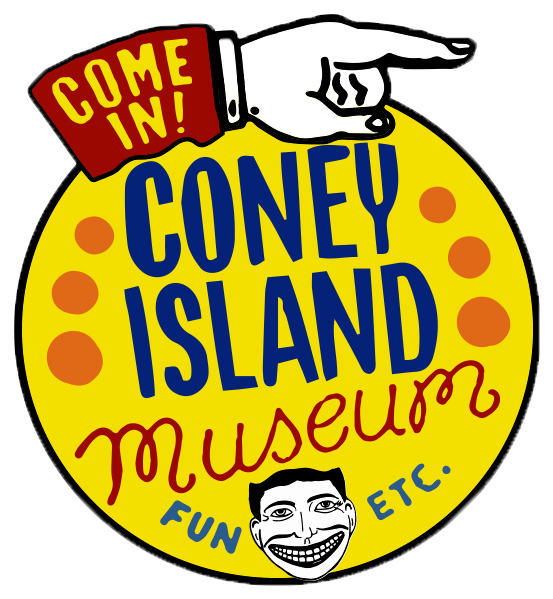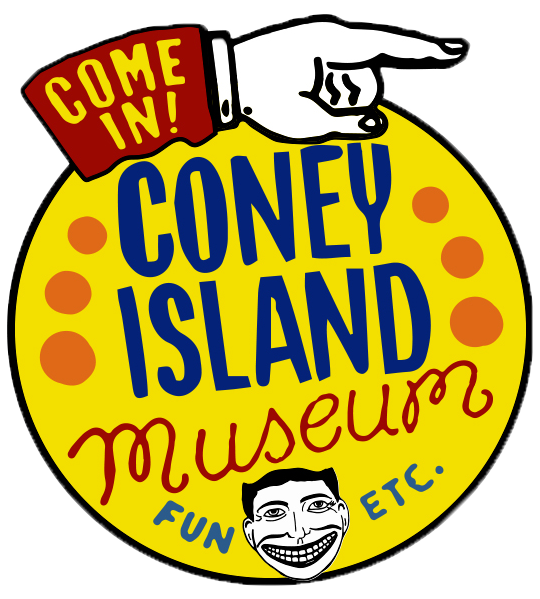RE: COLLECTIONS
As Curator, one of my more gratifying responsibilities is working to expand the Museum’s permanent collection. With over 5,000 items already listed in our catalogue, it’s hard to imagine we have room to grow, but we do. The history of Coney Island encompasses many elements of popular culture — art, architecture, music, theater, entertainment, commerce— creating a vast scope for our collection policy and practices.
The CIM has grown its collection in a number of ways. Located in a historic district that has undergone serious economic and cultural changes in the last century, some items and architectural artifacts have simply been rescued from the scrap heap. Sometimes, a collecting institution can acquire objects from another; for example, the CIM has been fortunate to receive objects from the Brooklyn Historical Society. Of course, the Museum also purchases items at auctions or from online dealers — within the limitations of our budget.
However, my favorite acquisitions are those gifted to us by individuals. Some of these donated items come to us with a very personal or family-related history, a story all of its own that gets woven into the broader narrative we present to our visitors, and endeavor to preserve for posterity. A photo of an old beau winning a marksmanship trophy, kept as a memento by someone’s mother. A trio of cut-paper silhouette portraits—grandmother, mother, and aunt— beautiful keepsakes of their visit to Coney Island. A collectible tin toy, greatly cherished, and generously shared. A collection of photographs and items from a local business, a gift from the owner’s family. And most recently, a two-headed goose delivered from a legendary sideshow performer/impresario (I’m still waiting for the backstory on this, Bobby!)
Trophy of Marksmanship Souvenir Photo, c.1946 , Gift of Lucy Fanella & Lori Battaglia
Games of skill have always been a favorite attraction for visitors to Coney Island. One of the most popular was the shooting gallery, which can trace its roots back through the centuries. Originally intended as an exercise to hone the proficiency of warriors, it was adapted for use as a game, and offered contestants the opportunity to test their skill before a cheering (or jeering ) audience, and take home a prize or trophy, like this photograph.
Hand-cut paper silhouettes were extremely popular in the late eighteenth to mid-nineteenth centuries, an inexpensive and efficient alternative for those who could not afford a formal portrait. Made obsolete by the introduction of photography, cut-paper silhouettes remained a nostalgic art form, and were readily available for purchase by visitors as a charming reminder of time spent at the People’s Playground.
Trio of Hand-cut Paper Silhouette Souvenirs, c. early 1940’s, Gift of Doug Ross
Technofix Brothers Einfalt, Coney Island Railway tin toy, c. 1964, Gift of Maia Murphy & Wesley Stokes
Tin toys were first manufactured in Germany in the 1850’s as an inexpensive and durable alternative to wooden toys. The addition of spring mechanisms created toys that could turn, bounce, and roll on wheels, inspiring a generation of colorful and imaginative designs. Highly collectible, the CIM has a small collection of amusement-ride themed tin toys in its permanent collection.
The M&C Beach Chair Rentals was established in 1917 by Alexander Myers, and passed to his son Albert “Bob” Myers in 1935. The brightly striped, canvas and wood chairs, umbrellas, and even the classic wicker “rolling chairs” were available to rent by visitors and beachgoers at sites along the Boardwalk. The main office of this iconic Coney Island business was located on West 12th Street — just down the block from the CIM — where it operated until 1979. In 2019, Bob Myer’s family generously donated a portion of their collection to the CIM, including original photographs, signage, and business-related objects.
M&C Beach Chair Rental Company Collection, Gift of the Vapnek Family
Top: time clock; Left: rental ticket puncher; Right: manager’s badge; Bottom: rental ticket book
Taxidermied two-headed goose, origin unknown, Gift of Bobby Reynolds
The art of taxidermy (the process of preserving animal skin together with its feathers, fur, or scales) has been in existence for centuries, becoming widely popular in Victorian England during the mid-nineteenth century. Novelty taxidermy, or “gaffs” , have been a traditional part of sideshow history. Stay tuned for more information about this specimen (lovingly nicknamed “La-Lucy” by the CIM staff), which we hope is forthcoming!
The CIM’s collection contains many precious treasures like these, each with a tale to tell. Nostalgic and filled with memories, they remind us that Coney Island is not just a neighborhood or a destination, but a living, evolving collective of ideas, dreams, and experiences shared by generations — past, present, and future.
LMS
If you have a piece of Coney Island history that you want to preserve and share with future generations, please visit our donation page.






